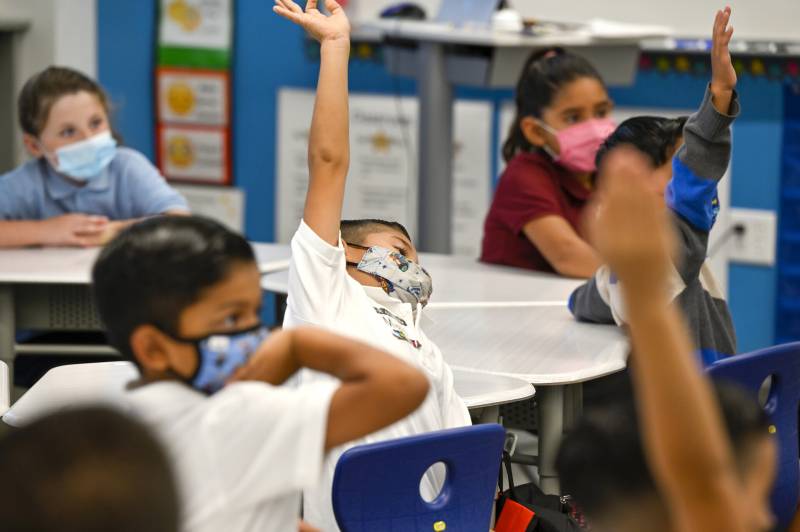Statewide, 83% of classes were taught by fully credentialed teachers in the 2020-21 school year. But at eight of the 10 largest school districts, classes at schools with the highest percentages of low-income students were more likely to be taught by a teacher without full credentials than at schools with the lowest percentages. Los Angeles Unified had the largest disparity among non-charter schools – the rate of fully credentialed teachers was 22% higher at schools serving more affluent families.
The 2020-21 school year was the first full school year under the pandemic, which brought a pre-existing shortage of fully credentialed teachers to a breaking point. Educators and experts interviewed by CalMatters said early retirements surged and other teachers left the profession, sometimes in the middle of the school year. School administrators said they rushed to get vacancies filled, often hiring teachers without full credentials. Substitute teachers were also in short supply, especially for schools with high rates of low-income students.
Marcus Funches, who oversees human resources at San Bernardino City Unified, said the district has battled a teacher shortage for years. To fill vacancies, the district hired teachers who lacked a full credential as long as they demonstrated a commitment to staying in the district. Earning a full or “clear” credential typically requires a bachelor’s degree, completion of a credentialing program at a university and working as a student teacher. There can be additional testing or coursework requirements, depending on the grade you want to teach.
“If those teachers are interns, but they have a passion for our students, those are the educators we’re looking for because they’re apt to stay,” he said. “They’re not going to leave when the going gets tough.”
But Kai Matthews, a project director at UCLA’s Center for the Transformation of Schools, said low-income students – defined as those qualifying for free or reduced price meals — have always had less access to better-prepared teachers, mostly because their schools were underfunded. And schools serving more affluent families are able to fundraise to pay teacher salaries, allowing them to reduce class sizes.
The socioeconomic disparity among schools is often coupled with racial disparities, Matthews said. A preliminary study she’s conducting shows that barriers to the teaching profession result in fewer qualified and experienced teachers of color, while students of color are more likely to be in classrooms taught by underqualified teachers.
“What does it mean if we keep sending less-prepared teachers to less-resourced schools?” Matthews said. “There’s no additional pay, just additional heartache and struggle for teachers.”
At Los Angeles Unified, the largest district in the state, the 10 schools with the greatest share of low-income students reported 76.3% of classes were taught by fully credentialed teachers. At the 10 schools with the smallest percentages of low-income students, 98% were taught by fully credentialed teachers. Los Angeles Unified spokesperson Shannon Haber said the district is working to address these disparities for the upcoming school year.
The disparities at the state’s largest school districts are the product of historical underfunding of public education as well as a system of teacher preparation that presents barriers to aspiring educators who come from low-income backgrounds, Matthews said. The credentialing process includes being a student teacher, which means working without pay to fulfill the teaching hours required. Additionally, the relatively low teacher salaries compared to those of other college-educated professionals can deter prospective teachers.
The state data, released for the first time, isn’t a perfect snapshot of teacher qualifications or experience. Statewide, credentialing data was missing for the teachers who teach about 7% of public school classes.
“From my understanding, there could have been a transition from one teacher to another or a mid-year resignation,” said Funches, the human resources director at San Bernardino City Unified. “It’s just a matter of not having all the information.”


